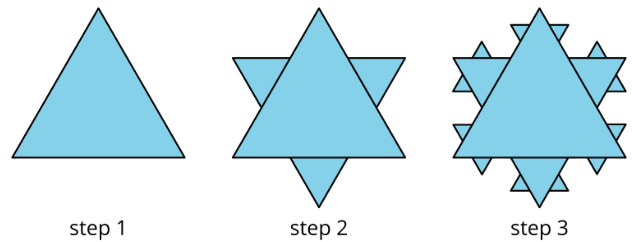4.3.3: Finding the Percentage
- Page ID
- 38312
\( \newcommand{\vecs}[1]{\overset { \scriptstyle \rightharpoonup} {\mathbf{#1}} } \)
\( \newcommand{\vecd}[1]{\overset{-\!-\!\rightharpoonup}{\vphantom{a}\smash {#1}}} \)
\( \newcommand{\id}{\mathrm{id}}\) \( \newcommand{\Span}{\mathrm{span}}\)
( \newcommand{\kernel}{\mathrm{null}\,}\) \( \newcommand{\range}{\mathrm{range}\,}\)
\( \newcommand{\RealPart}{\mathrm{Re}}\) \( \newcommand{\ImaginaryPart}{\mathrm{Im}}\)
\( \newcommand{\Argument}{\mathrm{Arg}}\) \( \newcommand{\norm}[1]{\| #1 \|}\)
\( \newcommand{\inner}[2]{\langle #1, #2 \rangle}\)
\( \newcommand{\Span}{\mathrm{span}}\)
\( \newcommand{\id}{\mathrm{id}}\)
\( \newcommand{\Span}{\mathrm{span}}\)
\( \newcommand{\kernel}{\mathrm{null}\,}\)
\( \newcommand{\range}{\mathrm{range}\,}\)
\( \newcommand{\RealPart}{\mathrm{Re}}\)
\( \newcommand{\ImaginaryPart}{\mathrm{Im}}\)
\( \newcommand{\Argument}{\mathrm{Arg}}\)
\( \newcommand{\norm}[1]{\| #1 \|}\)
\( \newcommand{\inner}[2]{\langle #1, #2 \rangle}\)
\( \newcommand{\Span}{\mathrm{span}}\) \( \newcommand{\AA}{\unicode[.8,0]{x212B}}\)
\( \newcommand{\vectorA}[1]{\vec{#1}} % arrow\)
\( \newcommand{\vectorAt}[1]{\vec{\text{#1}}} % arrow\)
\( \newcommand{\vectorB}[1]{\overset { \scriptstyle \rightharpoonup} {\mathbf{#1}} } \)
\( \newcommand{\vectorC}[1]{\textbf{#1}} \)
\( \newcommand{\vectorD}[1]{\overrightarrow{#1}} \)
\( \newcommand{\vectorDt}[1]{\overrightarrow{\text{#1}}} \)
\( \newcommand{\vectE}[1]{\overset{-\!-\!\rightharpoonup}{\vphantom{a}\smash{\mathbf {#1}}}} \)
\( \newcommand{\vecs}[1]{\overset { \scriptstyle \rightharpoonup} {\mathbf{#1}} } \)
\( \newcommand{\vecd}[1]{\overset{-\!-\!\rightharpoonup}{\vphantom{a}\smash {#1}}} \)
Lesson
Let's find unknown percentages.
Exercise \(\PageIndex{1}\): Tax, Tip, and Discount
What percentage of the car price is the tax?

What percentage of the food cost is the tip?

What percentage of the shirt cost is the discount?

Exercise \(\PageIndex{2}\): What is the Percentage?
- A salesperson sold a car for $18,250 and their commission is $693.50. What percentage of the sale price is their commission?
- The bill for a meal was $33.75. The customer left $40.00. What percentage of the bill was the tip?
- The original price of a bicycle was $375. Now it is on sale for $295. What percentage of the original price was the markdown?
Are you ready for more?
To make a Koch snowflake,
- Start with an equilateral triangle. This is step 1.
- Divide each side into 3 equal pieces. Construct a smaller equilateral triangle on the middle third. This is step 2.
- Do the same to each of the newly created sides. This is step 3.
- Keep repeating this process.

By what percentage does the perimeter increase at step 2? Step 3? Step 10?
Exercise \(\PageIndex{3}\): Info Gap: Sporting Goods
Your teacher will give you either a problem card or a data card. Do not show or read your card to your partner.
If your teacher gives you the problem card:
- Silently read your card and think about what information you need to be able to answer the question.
- Ask your partner for the specific information that you need.
- Explain how you are using the information to solve the problem.Continue to ask questions until you have enough information to solve the problem.
- Share the problem card and solve the problem independently.
- Read the data card and discuss your reasoning.
If your teacher gives you the data card:
- Silently read your card.
- Ask your partner “What specific information do you need?” and wait for them to ask for information.
If your partner asks for information that is not on the card, do not do the calculations for them. Tell them you don’t have that information. - Before sharing the information, ask “Why do you need that information?” Listen to your partner’s reasoning and ask clarifying questions.
- Read the problem card and solve the problem independently.
- Share the data card and discuss your reasoning.
Pause here so your teacher can review your work. Ask your teacher for a new set of cards and repeat the activity, trading roles with your partner.
Summary
To find a 30% increase over 50, we can find 130% of 50.
\(1.3\cdot 50=65\)
To find a 30% decrease from 50, we can find 70% of 50.
\(0.7\cdot 50=35\)
If we know the initial amount and the final amount, we can also find the percent increase or percent decrease. For example, a plant was 12 inches tall and grew to be 15 inches tall. What percent increase is this? Here are two ways to solve this problem:
The plant grew 3 inches, because \(15-12=3\). We can divide this growth by the original height, \(3\div 12=0.25\). So the height of the plant increased by 25%.
The plant's new height is 125% of the original height, because \(15\div 12=1.25\). This means the height increased by 25%, because \(125-100=25\).
Here are two ways to solve the problem: A rope was 2.4 meters long. Someone cut it down to 1.9 meters. What percent decrease is this?
The rope is now \(2.4-1.9\), or 0.5 meters shorter. We can divide this decrease by the original length, \(0.5\div 2.4=0.208\overline{3}\). So the length of the rope decreased by approximately 20.8%.
The rope's new length is about 79.2% of the original length, because \(1.9\div 2.4=0.791\overline{6}\). The length decreased by approximately 20.8%, because \(100-79.2=20.8\).
Practice
Exercise \(\PageIndex{4}\)
A music store marks up the instruments it sells by 30%.
- If the store bought a guitar for $45, what will be its store price?
- If the price tag on a trumpet says $104, how much did the store pay for it?
- If the store paid $75 for a clarinet and sold it for $100, did the store mark up the price by 30%?
Exercise \(\PageIndex{5}\)
A family eats at a restaurant. The bill is $42. The family leaves a tip and spends $49.77.
- How much was the tip in dollars?
- How much was the tip as a percentage of the bill?
Exercise \(\PageIndex{6}\)
The price of gold is often reported per ounce. At the end of 2005, this price was $513. At the end of 2015, it was $1060. By what percentage did the price per ounce of gold increase?
Exercise \(\PageIndex{7}\)
A phone keeps track of the number of steps taken and the distance traveled. Based on the information in the table, is there a proportional relationship between the two quantities? Explain your reasoning.
| number of steps | distance in kilometers |
|---|---|
| \(950\) | \(1\) |
| \(2,852\) | \(3\) |
| \(4,845\) | \(5.1\) |
(From Unit 2.3.1)
Exercise \(\PageIndex{8}\)
Noah picked 3 kg of cherries. Mai picked half as many cherries as Noah. How many total kg of cherries did Mai and Noah pick?
- \(3+\frac{1}{2}\)
- \(3-\frac{1}{2}\)
- \(\left(1+\frac{1}{2}\right)\cdot 3\)
- \(1+\frac{1}{2}\cdot 3\)
(From Unit 4.1.4)


